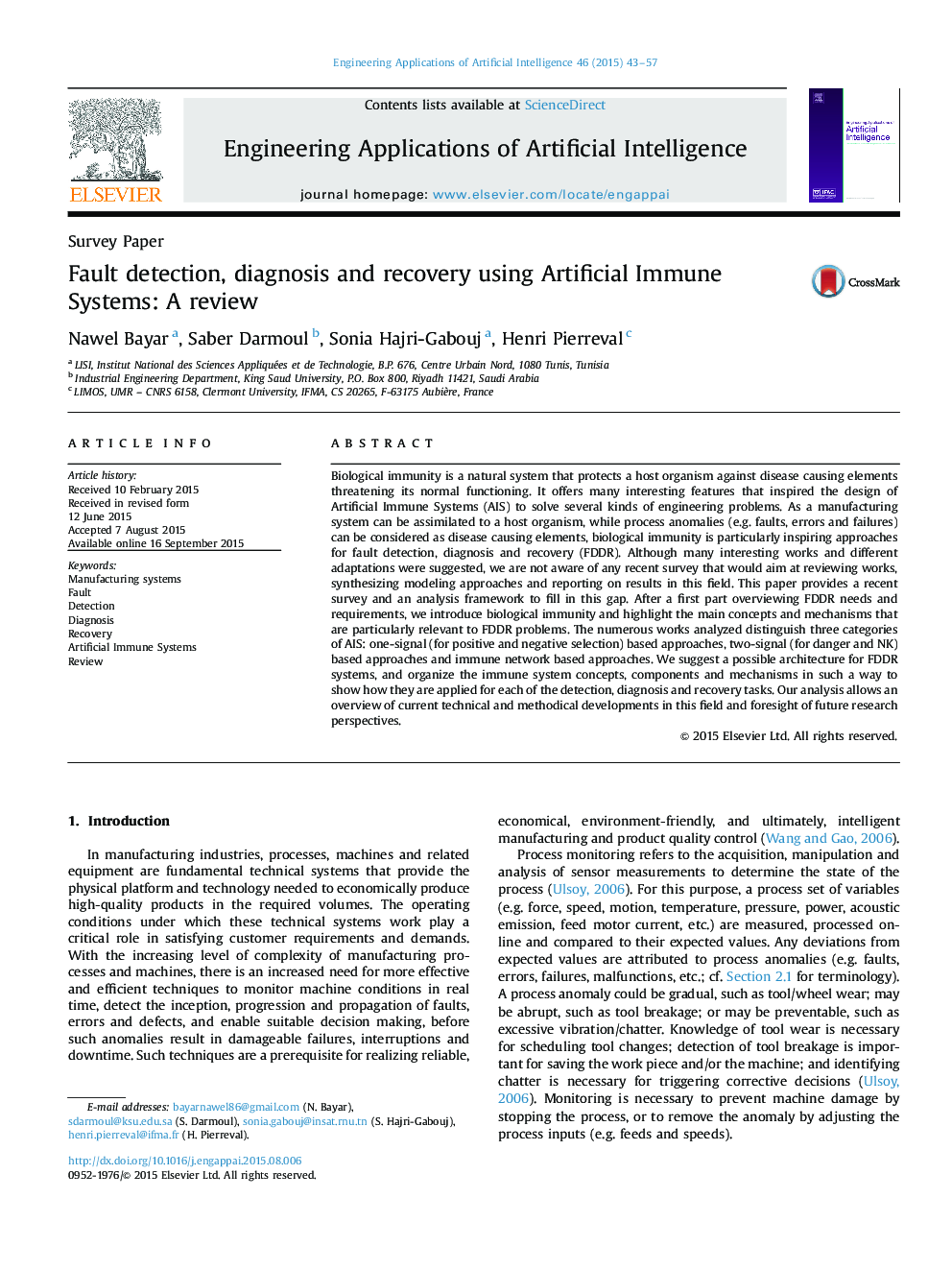| Article ID | Journal | Published Year | Pages | File Type |
|---|---|---|---|---|
| 380259 | Engineering Applications of Artificial Intelligence | 2015 | 15 Pages |
Biological immunity is a natural system that protects a host organism against disease causing elements threatening its normal functioning. It offers many interesting features that inspired the design of Artificial Immune Systems (AIS) to solve several kinds of engineering problems. As a manufacturing system can be assimilated to a host organism, while process anomalies (e.g. faults, errors and failures) can be considered as disease causing elements, biological immunity is particularly inspiring approaches for fault detection, diagnosis and recovery (FDDR). Although many interesting works and different adaptations were suggested, we are not aware of any recent survey that would aim at reviewing works, synthesizing modeling approaches and reporting on results in this field. This paper provides a recent survey and an analysis framework to fill in this gap. After a first part overviewing FDDR needs and requirements, we introduce biological immunity and highlight the main concepts and mechanisms that are particularly relevant to FDDR problems. The numerous works analyzed distinguish three categories of AIS: one-signal (for positive and negative selection) based approaches, two-signal (for danger and NK) based approaches and immune network based approaches. We suggest a possible architecture for FDDR systems, and organize the immune system concepts, components and mechanisms in such a way to show how they are applied for each of the detection, diagnosis and recovery tasks. Our analysis allows an overview of current technical and methodical developments in this field and foresight of future research perspectives.
